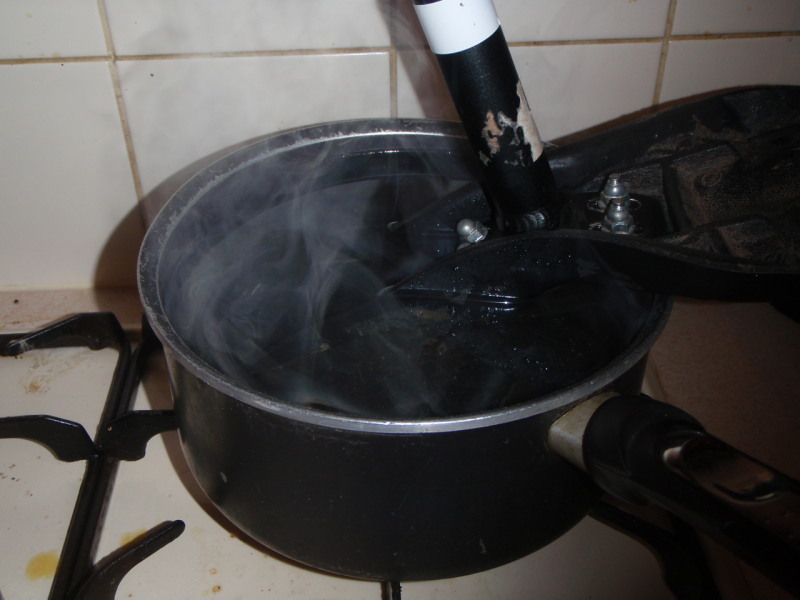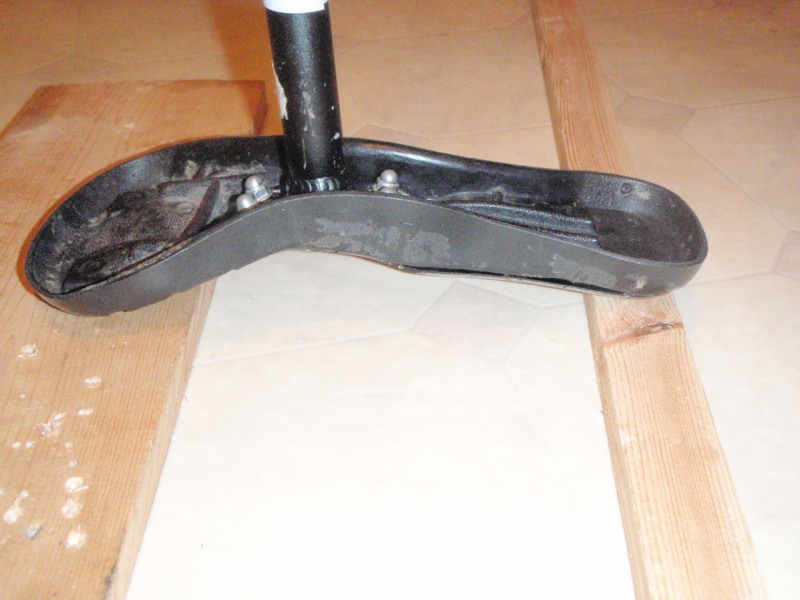Inspired by Pete’s Flatfish, I wondered if it was possible to make a standard base flat. I have an old style Velo base which I’d taken apart in order to trim the foam and thought I’d have a go at flattening it by heating - it appeared to be a thermoplastic material which would bend when heated. I hope I’m not stealing your thunder here, Pete as your base is still lighter, stiffer and nicer, but this is a way for tightwads like me to make a flat seat.
Using a pan of boiling water I put one end of the base in at a time and then turned the base upside down and stood on it to flatten it. This resulted in a nice flat base - unfortunately I found that a lot of the flattening had happened in the area where the seatpost mounted, so that no longer fitted properly. So I reheated the base and found it has memory - it returned to much the same shape it was before.
So then I bolted a seatpost in place to retain the shape in that part of the seat and repeated the process. As I’d now got the steel reinforcing plate in place to hold the seatpost I used some wooden blocks to protect the floor - this also allowed me to flatten the base a little more as before the flattening had been stopped by the middle of the base hitting the floor (with it then springing back a little when I released the pressure). To flatten the nose I reversed the reinforcing plate so that the full force was going into the base, not the plate - its important that you flatten the back first in order to get the plate to fit.
A few important tips - the pan of water needs to be boiling and you need to leave the base in for a few minutes to heat through as the material doesn’t conduct heat that well and it seems it needs to be that hot in order to deform easily. You need to keep standing on the seat for several minutes as it takes a while for it to cool down and set in place. When mounting the seatpost you want to have it as far forwards as possible with the nose of the saddle as low as possible, as it’s harder to flatten the nose of the saddle than the rear in order to get it low enough - my saddle also bent around the front of where the seatpost was mounted, so if you mounted it further back you might not be able to get the nose any lower later. I found the sides flared out a bit during flattening, so used a vice to push them back in whilst the base was still warm (after the initial flattening had set).
I’ve not tried fixing the foam back on mine yet as I’m looking to get longer bolts for the front handle to use with a T-bar, but pushing the foam on by hand I seem to have got a similar profile to what people are getting with a Flatfish. It’s certainly a lot flatter than a standard saddle.
I’ve only tried with an older base so far, but I understand it is also possible to flatten a newer style base in the same way…
Here are some pics: the original base; with the reinforcing plate reversed to flatten the nose; in the pan of water; on the wooden blocks ready to stand on; the final flattened base.















